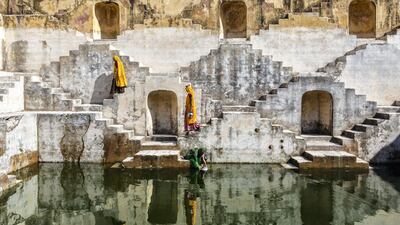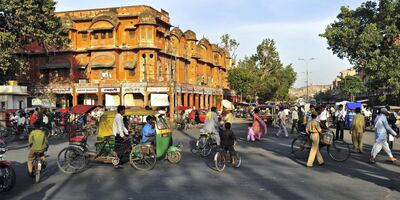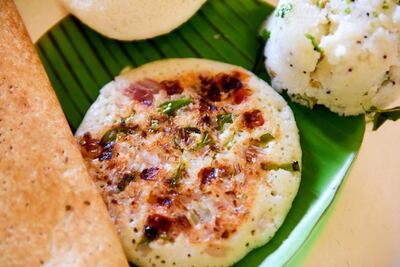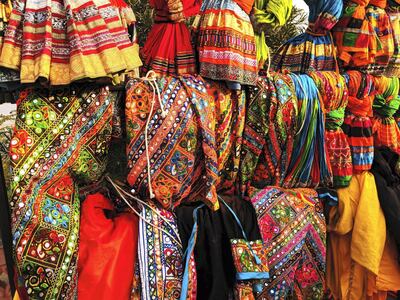Jaipur is similar to an onion, full of layers just waiting to be peeled back. Breathtaking architecture, colourful shopping, varied accommodation options and flavour-charged gastronomic fare make this Indian city a deeply immersive travel destination.
Founded in 1727 by Rajput king Sawai Jai Singh II, the fortified metropolis, located in India's north-western desert state of Rajasthan, is also known as the "Pink City" because of the rose-hued clusters of historical buildings that pepper it like confetti.
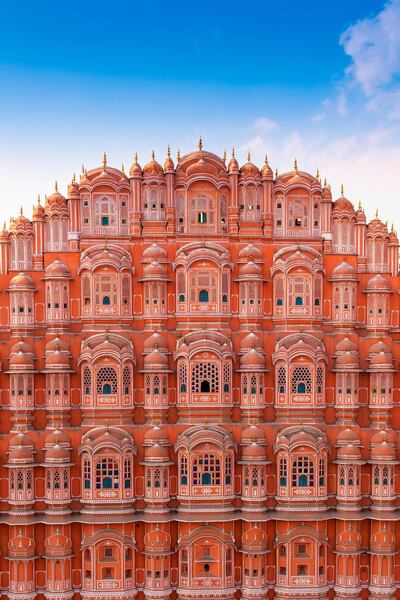
Jaipur's unique architecture and culture earned it a Unesco World Heritage Site designation in July. "Unlike other cities in the region located in hilly terrain, Jaipur was established on the plain and built according to a grid plan interpreted in the light of Vedic architecture," Unesco explains on its website.
“The streets feature continuous colonnaded businesses that intersect in the centre, creating large public squares called chaupars. Markets, stalls, residences and temples built along the main streets have uniform facades. The city’s urban planning shows an exchange of ideas from ancient Hindu and modern Mughal, as well as Western cultures … Designed to be a commercial capital, the city has maintained its local commercial, artisanal and co-operative traditions to this day.”
Here is our comprehensive guide for exploring the city.
A comfortable bed
As one of India's most popular tourist destinations, Jaipur is chock-a-block with attractive accommodation options – from five-star to no star. Seeking a hotel fit for a nawab? Look no further than Rambagh Palace, the erstwhile residence of the maharajas, located right in the heart of town. Think eye-popping opulence and extravagantly decorated suites, with four-poster beds, period furniture, marble bathrooms and lush views over the landscaped Mughal Gardens. Rooms cost from $400 (Dh1,469) per night; www.tajhotels.com.
Jaipur Marriott Hotel combines modern delights with traditional hospitality. Located near Jawahar Circle, which locals claim to be the biggest circular park in Asia, it offers lavish rooms and suites. Saffron restaurant will tickle your taste buds. Rooms cost from $120 per night; www.marriott.com.
As one of the Pink City’s first privately owned slices of real estate to be turned into a boutique hotel, Samode Haveli is the former residence of the rulers of the kingdom of Samode. Soothing pastel-hued rooms, an inviting pool and unobtrusive service make it a very popular stay. Expect to pay about $150 per night; www.samode.com.
Find your feet
Jaipur's streets demand to be roamed. The old walled city, with its ancient gates and markets, is endlessly fascinating. You could spend days ambling around and unravelling its mysteries. But make sure to punctuate your explorations with visits to other famous sites, such as the Hawa Mahal (Palace of Winds), an 18th-century, five-storey screened porch with 953 windows. The city's most defining architectural landmark flaunts intricate latticework and was designed to allow royal ladies to watch the city from the palace, while remaining in purdah.
The colonnaded City Palace, with its beautifully laid out courtyards and museums, is an ode to a bygone era. Chandpole, a bustling old-town cluster of narrow lanes and pink buildings, is where you can watch vendors trade the old-fashioned way, plying marble, textiles, cotton quilts and traditional chess sets.
However, the most exquisite of all Rajput buildings is Amber Fort, a Unesco World Heritage Site crafted from pale yellow and pink sandstone and white marble. Located 11 kilometres away from the city and perched on a hilltop in the Aravalli Range, it is fringed by the glassy Maota Lake. One of its complexes – the Sheesh Mahal (Mirror Palace) – has inspired poets and writers for centuries, with walls and ceilings encrusted with glass and mirror work.
Meet the locals
The best way to interact with Jaipur’s friendly residents is to visit local handicrafts centres. The Anokhi Museum of Hand Printing is housed in a magnificently restored haveli (mansion) near the famous Badrinath Temple and offers the opportunity to interact with local artisans, who toil to keep the city’s famous textile legacy alive. The museum itself is a trove of hand-block printed textiles, images, tools and related objects, offering a fascinating insight into this hallowed craft.
For a local of a different kind, visit Elefantastic, an elephant sanctuary located on the outskirts of the city, where you can get up-close and personal with these gentle giants and their caretakers. Elephants were prolifically used by Rajput warrior kings during both wartime and public occasions, so they have an old association with Jaipur. Elefantastic works with low-income, marginalised caretaker families to provide welfare services and to educate people about the plight of Asian elephants. You can wash, feed and water the tuskers and learn about their "make up", as well as their ailments and treatments, directly from their keepers.
Book a table
When you’re not seeking out museums or palaces, or having a chinwag with the locals, you’d do well to pamper your palate in a city that serves up notoriously tasty fare. Eschew standard restaurant offerings and trawl labyrinthine lanes for Jaipur’s mouthwatering street food. It is fresh, delicious and cheap. What’s not to love?
Begin with pyaz ki kachori from Rawat Mishtan Bhandar, located on Station Road. Ignore the sound of noisy vehicles and teeming crowds to focus instead on the deep-fried dough balls, bursting with piquant spices, onions and potatoes and paired with hot sauces. Follow this up with a visit to Lassiwala on MI Road for the creamiest and foamiest lassi around, served in clay cups. The serpentine queues witnessed here at all times attest to its popularity. Food theatre comes free of charge, as you watch the chefs prepare the delectable drink fresh in front of you.
Wrap up your food safari with a plate of delicious matka kulfi, loaded with falooda (chilled noodles), at shop number 28 on Link Road at Bapu Bazaar. Thrusting crowds notwithstanding, the ambrosial dessert makes the effort worth it. Celebrity spotting is a bonus, as you just might bump into a Bollywood celebrity or two queuing up next to you.
Don’t miss
End your day by watching the Sound and Light show at the nearby Maota Lake. The entertainment combines acoustics, folk music and stellar lighting, to bring to life legends about the 28 kings of the Kachhwaha dynasty. Don’t forget to book in advance.
Shopping
With an array of handicrafts, silver jewellery, bangles, textiles, apparel, fabrics and carpets on sale for astonishing prices, Jaipur is a shopaholic's dream. Peruse colourful markets such as Johri Bazaar, Bapu Bazaar, Badi Choupad and Hawa Mahal for the best buys. Don't forget to haggle, though, as this can often miraculously whittle down the price by nearly half.
Take your time discovering the specialised markets, too. The wholesale flower market (phool mandi), ensconced within the folds of Chandi ki Taksal gate in the Old City, is eminently Instagrammable. Its pugree-clad merchants put out stunning and fragrant flower displays and floral art, while attending to business with lyrical grace.
What to avoid
Avoid the city’s crowded bazaars at peak time. Don’t leave your bags unzipped while walking through the busy markets. Beware of touts who hang around famous sites promising “good deals”. It is best to pre-book a tour with a reputed agency to get the most from your visit.
Getting there
Many Indian airlines – including Air India – fly directly into Jaipur from Dubai and Abu Dhabi, with return flights starting from Dh1,000.
